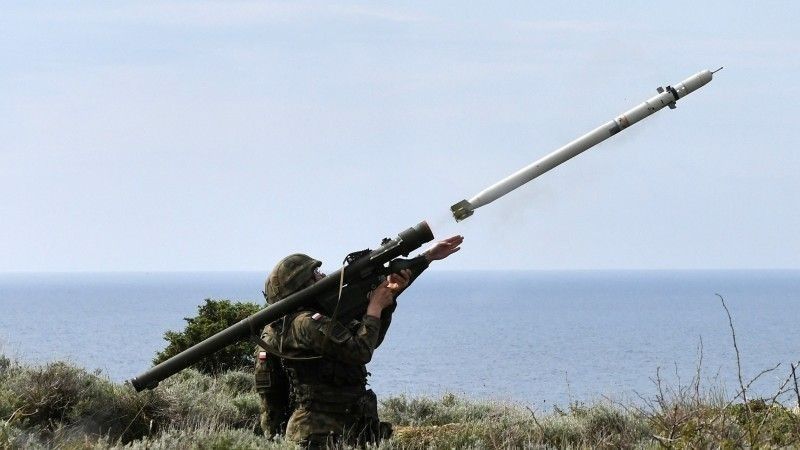Armed Forces
Piorun MANPADS Headed to Slovakia: We Know the Details

The Slovak government approved a decision to procure Piorun MANPADS from the Polish government. The Warsaw’s proposal turned out to outmatch the ones submitted by France, Sweden and ROK. Bratislava would also acquire the Israeli Barak-MX system, becoming the first user of that asset in Europe.
The Slovak media outlets inform that the government approved the selection of SAM systems for the Armed Forces. Procurement of Polish VSHORAD Piorun MANPADS, and a single Israeli SHORAD/MRAD Barak-MX system has been planned. The total cost of the investment is defined as EUR 194 million, while the Polish industry should receive EUR 65 million for 36 MANPADS systems. Until the end of the year, G2G agreements are expected to be negotiated, and concluded, and submitted to the government for approval and signing.
Bratislava, in the competitive procurement process launched this year, was looking for a single medium range MRSAM-1 system, and 12 or 36 CREWPADs/MANPADs. These systems were to be procured in a G2G formula to begin the process aimed at replacing the Igla-1 and Kub systems, and to partially fill in the gap that emerged when the S-3000PMU system was transferred to Ukraine. Bratislava claims that this is the first stage of modernizing the air defences.
What the motivation behind selection of the Piorun missile was?
The Slovak authorities publicized the results of the assessment that was used to select the final bids. From the point of view of a Polish reader, the section on VSHORAD systems is especially interesting, as the Slovaks compared the Polish Piorun bid, with the competitive western systems: Swedish RBS 70 NG, French Mistral 3, and South Korean Chiron. All three systems met the minimum technical requirement. Poland has been the only nation to offer a shoulder-launched system that can be handled by a single soldier. The remaining bids involved, as the Slovaks admit, CREWPAD solutions that are a bit heavier, utilizing a base, and that are handled by two soldiers.
The Polish proposal was the only one that made it possible to procure 36 systems which also renders much more firepower, than 12 CREWPADS. 36 Polish MANPADS (probably a launcher, with a set of missiles, possibly with extras), come at a price of EUR 65.9 million, EUR 1.8 million a piece. For the sake of comparison, 12 Swedish RBS 70 NG came at a price of EUR 39.5 million (3.3 million euros per system), 12 French Mistrals 3 came at a price of EUR 35 million (EUR 2.9 million a piece), while 12 Korean Chiron systems had a pricetag of EUR 31 million.
Initially, the offers were to be assessed with consideration given to the technical parameters, total lifecycle cost, logistics, procurement and training price and also the industrial share - none of the bidders has taken latter into the account. The Swedish system was ranked first, Piorun systems came in second. The Slovaks, however, took into account the fact that Poland declared delivery of 36 systems, instead of 12, which translates into an ability to establish a much greater combat potential. Furthermore, the Polish proposal was the cheapest one, unit-wise, which actually translated into the best cost-effect ratio.
36 Piorun systems would be used to protect a mechanized brigade, and a reinforced battalion combat team, according to combat capabilities development plan adopted back in 2021. The single Barak-MX system consisting of 3 launchers with 8 missiles is to have a price-tag of EUR 128.1 million. That system was one that received the best rating - with Rafael Spyder MR (4 launchers, 8 missiles each), at EUR 149.5 million, IRIS-T SLM (4 launchers, 8 missiles each), at EUR 200.3 million, and French MICA VL (EUR 169.2 million) coming up next. Considering the SHORAD/MRAD system for protecting the critical infrastryucture and maintaining the personnel proficiency in the air force’s missile units, it needs to be noted that Slovakia has become the third NATO member state that procured an Israeli air defence system - but different than the ones procured by the predecessors - Spyder in the case of Czech Republic, and David’s Sling in the case of Finland. For Bratislava, independent assessment of systems was far more important than interoperability, even with so small number of systems procured.
From the Polish point of view, this is yet another export success for the Piorun systems. The Piorun had already been procured by USA, Ukraine (where it has been proven in combat, industry was also delivering the launchers), Lithuania, Latvia, Estonia, Norway, and undisclosed state in the Balkans. All signs suggest that Slovakia would now be joining the Piorun user base. A consistent effort aimed at developing MANPADS is now becoming fruitful, not just because of reinforcement of the Polish Armed Forces, but also due to the expansion of the export offer. Noteworthy, the Polish industry is already working on the next generation Piorun NG system, and the Grzmot missile making use of the technologies used in Grom/Piorun programme, but designed for the self-propelled Poprad and Sona systems.
Piorun is a MANPADS developed by Mesko, jointly with the CRW Telesystem-Mesko entity, within the framework of an R&D project. The Polish systems can neutralize threats at a distance ranging from 400 meters to 6.5 kilometres, flying at an altitude from 10 meters, to 4,000 meters, also when artificial or natural interference is present. Optoelectronic targeting unit can be used with them. Piorun can counter fixed- and rotary-wing aircraft, cruise missiles, and UAVs. All of those threats have been neutralized, with successes, with the use of the Polish Piorun missiles during the war in Ukraine.
